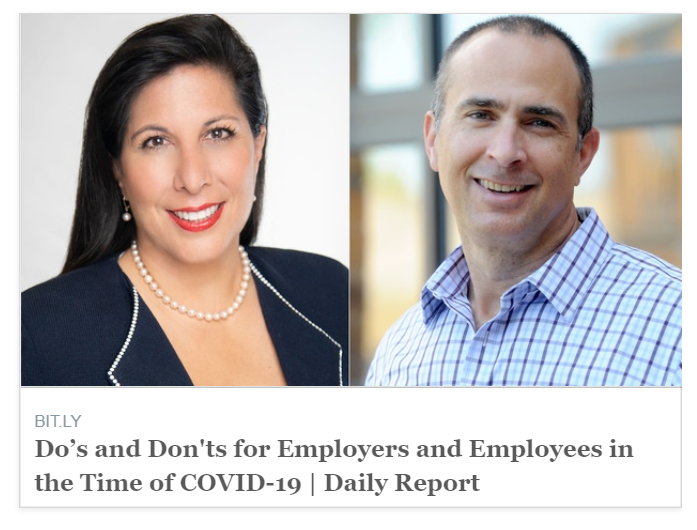
Offices are opening but employees might be tentative about returning to the workplace without a coronavirus cure or vaccine. How do employers handle this potential conflict? Remain reasonable, assess the rationale behind the employee’s hesitancy, and find creative solutions, wrote Todd Stanton and Amanda Farahany of Barrett & Farahany in a June 22 Fulton County Daily Report article.
Can you force an employee to come back to work?
The attorneys discussed whether employers can insist an employee return to work. “If the employee’s reason is protected by law, then no. If it’s not protected, then perhaps,” they wrote. “But does the employer want to pick this fight now?”
Protected reasons include disabilities as defined by the Americans with Disabilities Act (ADA) or a serious health condition as defined by the Family & Medical Leave Act (FMLA). Protected reasons may entitle the employee to additional time away from work or other accommodations, such as working from home. Under the Families First Coronavirus Response Act (FFCRA) employees are also entitled to paid sick leave as well as paid time off for childcare purposes.
An unprotected, and likely invalid reason, for not returning to work would be an employee’s unspecified and generalized fear of the coronavirus, wrote Farahany and Stanton. Likewise, an employee’s advanced age, without other medical condition, or co-habitation with someone more at-risk for infection, may not be sufficient reasons for staying home.
“Because each situation is fact-dependent, we are encouraging employers and employees to communicate clearly about returning to the office,” noted the co-authors.
They advised employers to be careful not to make decisions, even benevolent ones, that could be based on protected characteristics. As an example, the attorneys said, having an older employee work from home while bringing back younger workers could be grounds for a discrimination suit.
How does a government quarantine affect the situation?
Farahany and Stanton reminded employers that they cannot defy a governor’s orders. Elderly and at-risk individuals in some areas are being asked to stay home until later in the summer. Don’t pick this fight unless the person is absolutely critical to your operation, the co-authors noted.
And with summer camps canceled, childcare centers closed, and school districts still making fall plans, employers should keep in mind employees’ rights under the FFCRA, the co-authors noted. An employee could return to work and then decide they need to file for two weeks of Emergency Paid Sick Leave (at full pay) followed by another 10 weeks of leave (at up to 2/3 pay) under the Extended Family and Medical Leave Act.
Remain flexible and transparent.
“Employers should work individually with employees on return-to-work issues and keep an open mind about teleworking,” Farahany and Stanton wrote. At the same time, they noted that in some cases employers may need to draw the line as with a critical employee with no protected reason for staying home.
“Remain flexible, understanding and transparent as you work toward reasonable solutions – happy employees don’t call attorneys,” the co-authors pointed out. “If you have an unreasonable employee or situation, call your employment attorney.”
You can read the entire article on the Fulton County Daily Report website (subscription required).